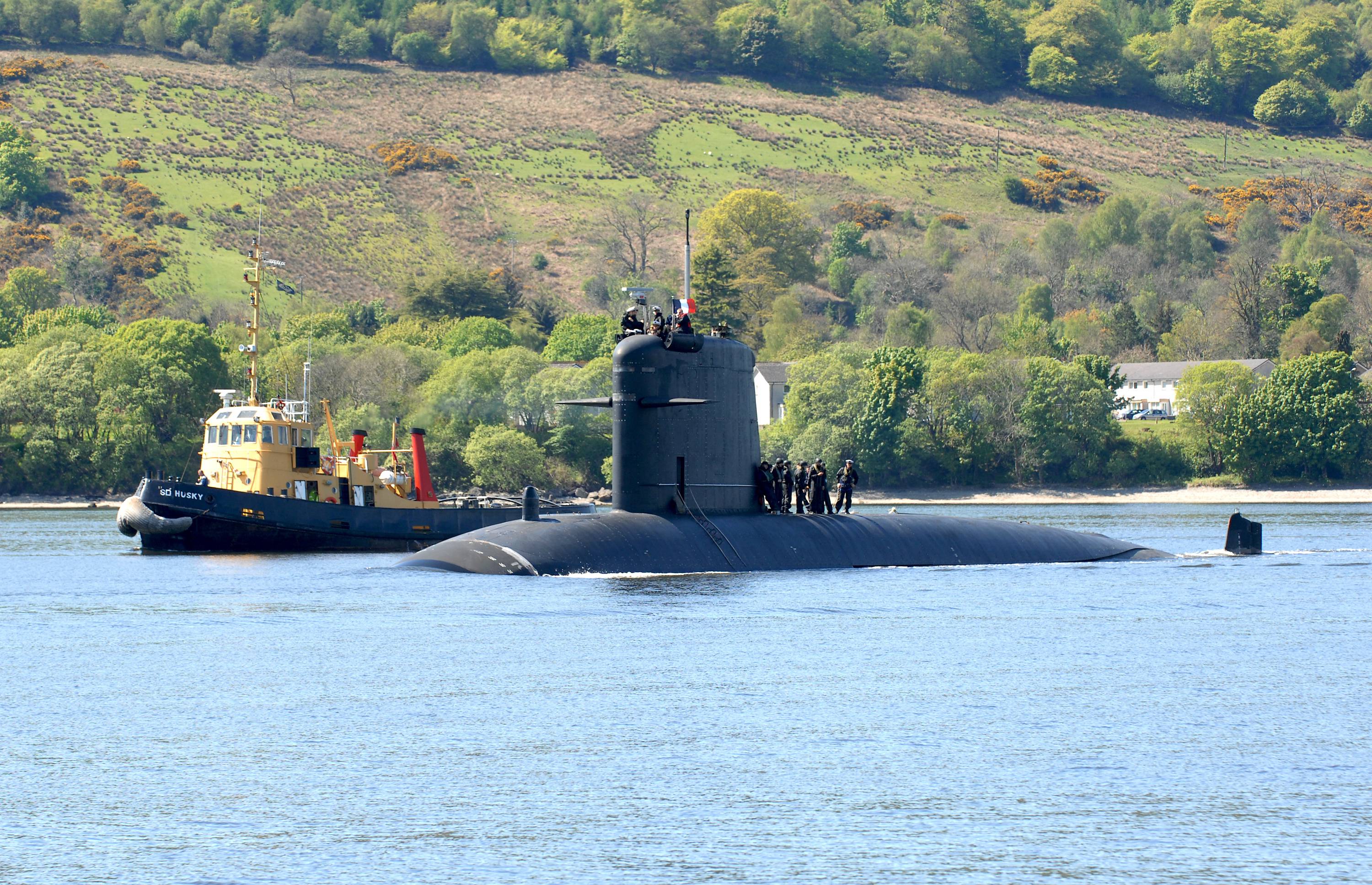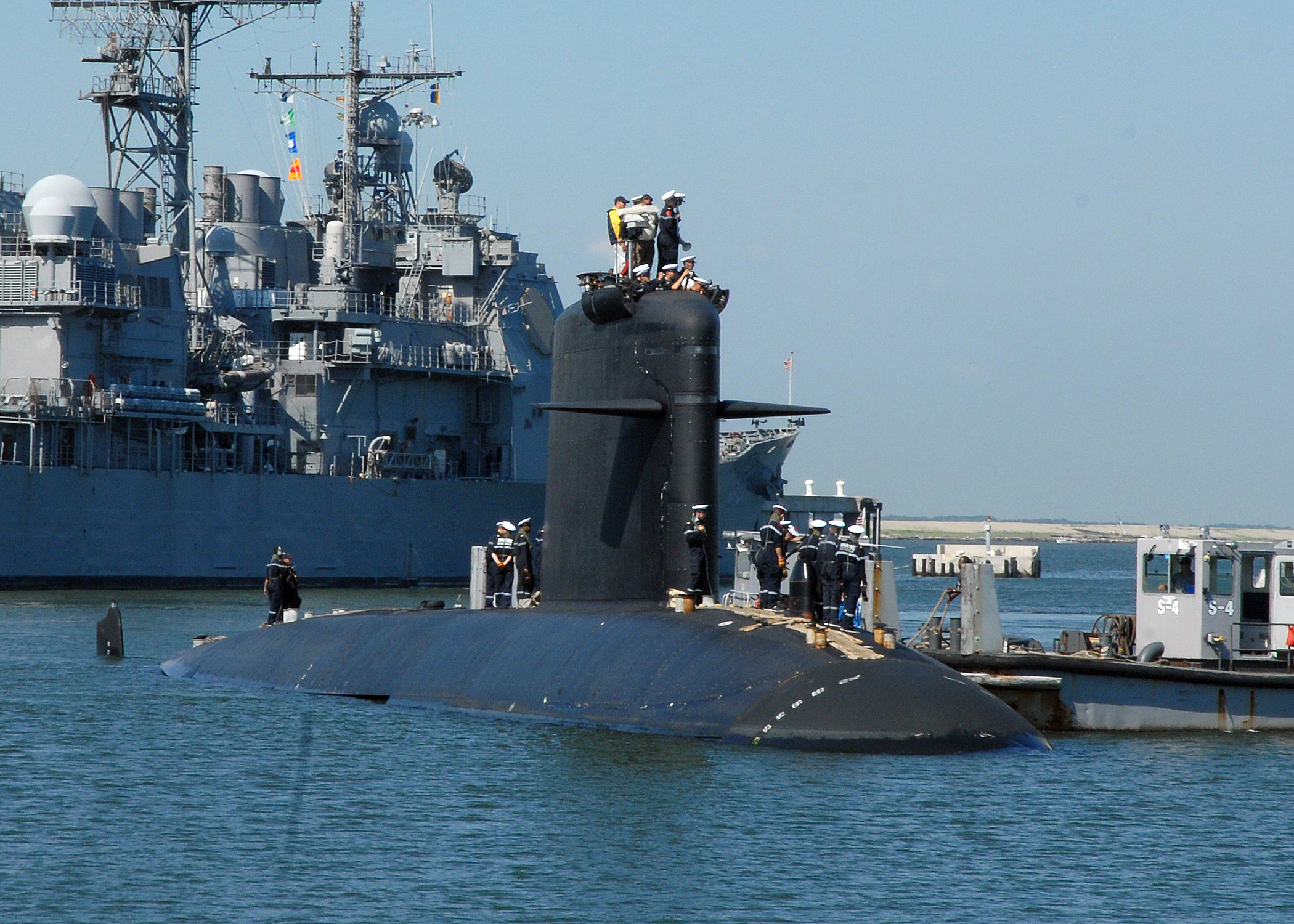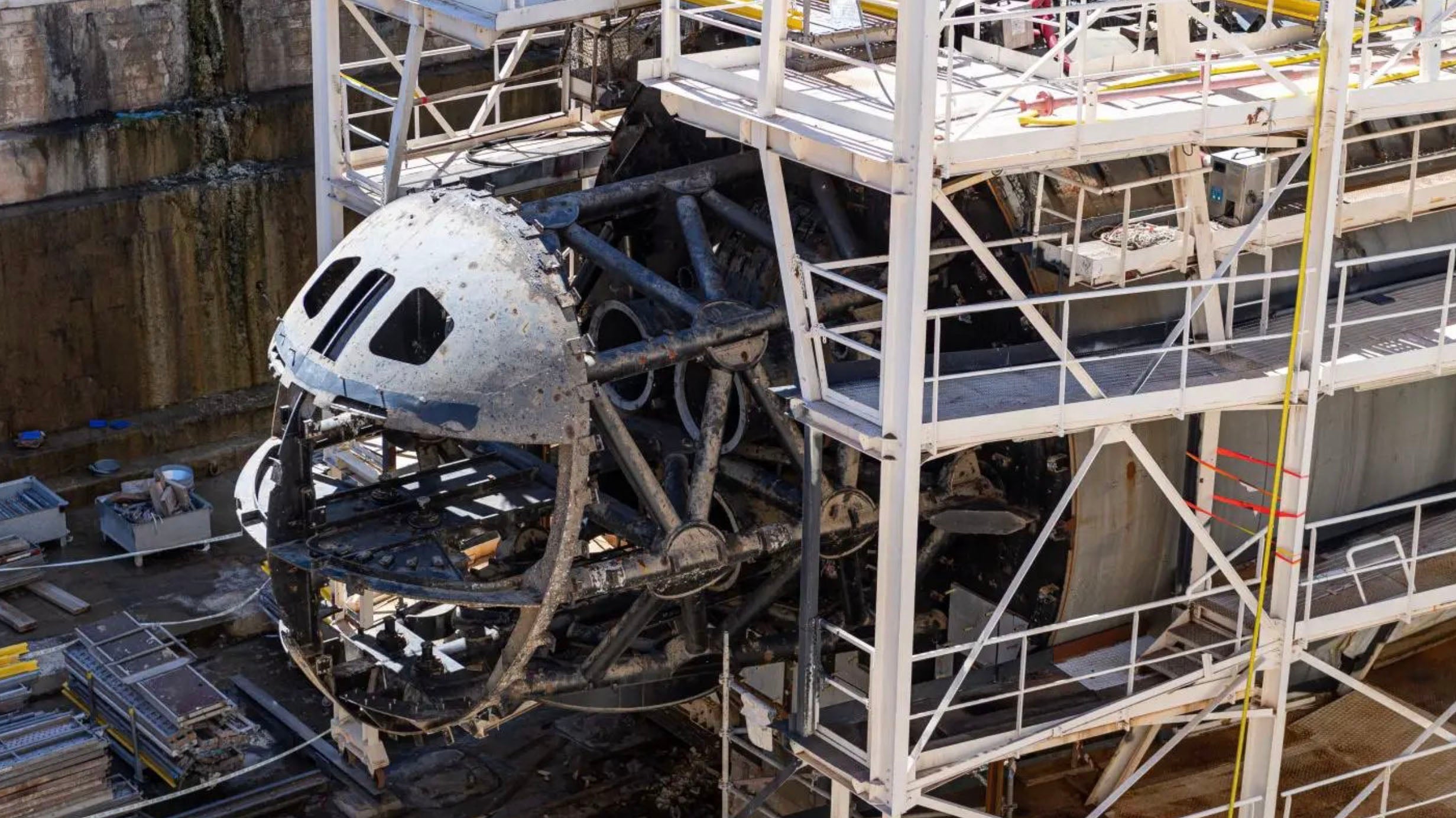Faced by an overall shortage of nuclear attack boats, the French Navy has confirmed that it will graft a new forward section onto the hull of the Rubis-class nuclear-powered attack submarine Perle that was badly damaged in a fire that broke out in dry dock at Toulon, southern France, last summer. Speaking at the Euronaval Online 2020 exhibition earlier this week, the French Minister of Defense, Florence Parly, announced that the submarine would be repaired and returned to service.
“I am able to tell you that we can repair Perle and that we will repair the Perle,” Parly told the Euronaval Online audience during the digital version of the maritime warfare exhibition, which is running from October 19 to 25, 2020.
During the repairs, the bow section of the Saphir, a previously retired Rubis class nuclear attack submarine, will be mated to the Perle at the Naval Group submarine shipyard in Cherbourg, northern France. Parly said the work will take 300 people six months to complete.
This kind of “nose job” is not unheard of for a badly damaged submarine. After the U.S. Navy’s Los Angeles-class attack boat USS San Francisco collided with an underwater seamount in the central Pacific in 2005, the bow of the USS Honolulu was subsequently grafted onto it, as The War Zone explained here.

“Naval Group has already carried out this type of complex operation in the past,” said Emmanuel Gaudez, a spokesperson for the shipbuilder, in a statement reported by Naval News. “This is a succession of cutting, welding and connection tasks already carried out by the teams of Naval Group and its partners.
“The thick hull cutting and welding work will be entrusted to the Cherbourg site,” he continued. “The other preparatory work that will be necessary on the front of the SSN Saphir will be carried out by the Services teams, in particular those at the Toulon site.”
The shipyard plans to start work on repairing the Perle in January 2021, once the submarine arrives in Cherbourg. It expects the work to be completed in time for the Perle to be redelivered to the French Navy in early 2023.

Gaudez said that the repairs will not interfere with the schedule for the French Navy’s new class of Barracuda attack submarines, which Naval Group is also building. You can read all about these impressive submarines in this previous War Zone article.
Perle had suffered extensive damage after a fire broke out onboard, reportedly the result of faulty lighting, while the submarine was undergoing repairs on June 12, 2020. Centered in the forward part of the boat, the blaze continued to burn for more than 14 hours, and hundreds of firefighters were required to extinguish it.
There were no weapons or nuclear fuel onboard at the time and the reactor rooms were not affected by the fire. There were no reports of injuries. However, the high temperatures caused by the flames caused irreparable structural damage to steel components in the forward part of the hull, which is what will now be cut away and replaced.
The potential damage of a submarine blaze in drydock was previously made abundantly clear when the U.S. Navy’s Los Angeles-class attack boat USS Miami
caught fire during an overhaul in 2012 as the result of arson. The submarine was withdrawn from service as a result of the damage.
More recently, the U.S. Navy has experienced serious fires onboard the amphibious assault ship USS Bonhomme Richard — also now being investigated as a potential act of arson — as well as on the future USS John F. Kennedy, a Ford-class aircraft carrier still under construction, and on Bonhomme Richard’s sister ship, USS Kearsarge. The U.S. Coast Guard, too, has had its share of recent shipboard fires.
When it comes to Perle, Minister of Defense Parly spoke of the importance of restoring the French Navy’s operational capacities “while ensuring the safety of the sailors.” Clearly, there is a requirement for all four of the remaining Rubis-class submarines to be operational, especially when, at any given time, two or three of these will likely be in refit, undergoing scheduled maintenance, or working up to train its crew. The first of the Rubis class boats, Saphir, was withdrawn from service in July 2019 and is now available to be cannibalized as part of the repairs.
The new Suffren, the first of the successor Barracuda boats, six of which are eventually planned, will not be available until 2021. The French Navy considers six attack submarines necessary to ensure that two or three can be permanently deployed at sea, where their key roles include protecting the aircraft carrier Charles de Gaulle and the Triomphant class of nuclear-armed ballistic missile submarines.
Among the advances that the new attack submarines will bring is their armament of MdCN cruise missiles, which have now begun test launches from the Suffren. The Missile de Croisière Naval, or Naval Cruise Missile, is a maritime version of the air-launched MBDA SCALP/Storm Shadow and will allow conventional attacks on high-value targets at a range of “several hundred kilometers,” according to French sources. The SCALP/Storm Shadow has a range of more than 155 miles, based on figures provided by the manufacturer.
The first test-firing of an MdCN from Suffren took place near the Biscarrosse missile test center on the French Atlantic coast on October 20, 2020. The same weapon is already part of the armory of the French Navy’s FREMM multipurpose frigates and was first used in combat during strikes on Syrian targets believed to be associated with the country’s chemical weapons program, in April 2018.
“Until now, France’s submarine force could strike submarines and surface ships. Henceforth, it can destroy heavy land infrastructure at long range,” announced Florence Parly, in a statement marking the MdCN’s test launch.
The Barracudas will also retain the ability to employ the MBDA SM39 Exocet subsonic anti-ship missile, which is also carried by the Rubis class boats, as well as the next-generation F21 heavyweight torpedo.
In another advance over their predecessors, the Barracudas will be able to carry and deploy small teams of special operations forces.
However, until the arrival of the Barracuda class, the French Navy remains reliant upon the Rubis class, a design that dates back to the mid-1970s and which was the country’s first nuclear-powered attack submarine. With a submerged displacement of 2,600 tons, these are the smallest nuclear-powered attack submarines active anywhere in the world.

In fact, back in the 1960s, France had considered building a larger attack submarine, with a displacement of around 4,000 tons submerged, before switching to the smaller Rubis design that was based on the hull form and layout of the diesel-electric Agosta class.
Despite reportedly being excessively loud and lacking in performance as originally completed, all six Rubis boats were significantly upgraded under the Améthyste program, which stands for Amélioration tactique, hydrodynamique, silence, transmission, écoute, or Silent Acoustic Transmission Tactical Hydrodynamic Improvement in English. This work was undertaken between 1989 and 1995 and left the boats with a significantly revised hull form and other modifications.
Originally entering service between 1983 and 1993, the surviving Rubis boats are being modernized to ensure they can continue in service until 2030, by which time the full fleet of Barracudas should be available and the earlier submarines can be retired.
The French Navy’s efforts to regenerate its attack submarine force demonstrate the continued importance of these deadly and highly adaptable vessels to modern naval warfare. Taking a novel approach to repairing the Perle will help maintain a fleet that’s large enough to ensure that adequate numbers of submarines are available when required.
Contact the author: thomas@thedrive.com
